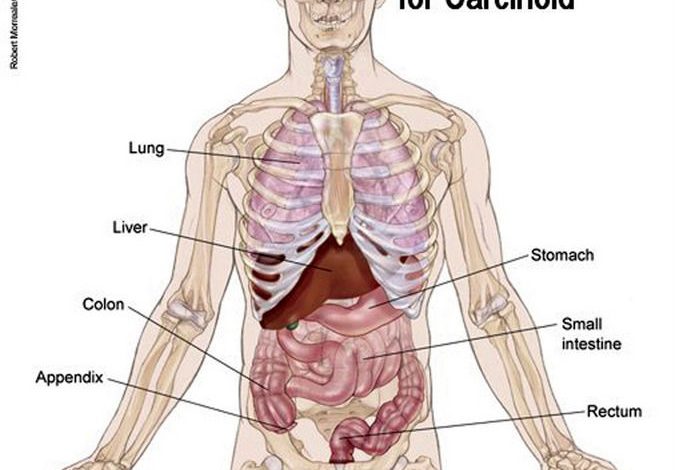

Digestive Health
By Dr Saravana K.
Carcinoid tumours are slow-growing cancerous growths that usually occur in the ileum (the lower section of the small intestine), the appendix, and the rectum. These tumours secrete large amounts of normal body chemicals such as serotonin, bradykinin, histamine and prostaglandins. People who have high levels of these chemicals in their bodies may have carcinoid tumours. It can spread to other organs, including the liver, lungs, bone, lymph nodes and ovaries. They are classified by their location in the body in the following manner:
- Localised: the tumours appear in the appendix, small or large intestine, rectum or stomach, and have not spread from the original site.
- Regional: the cancer has moved from these sites to lymph nodes or nearby tissues.
- Metastatic: the cancer has spread to other sites in the body, far from the original location.
Patients who have carcinoid tumours may not have symptoms and thus may not be aware that they have the disease. Symptoms often develop only after the tumour has spread, and include the following:
- flushing of the face and neck
- abnormal heartbeat
- abdominal pain
- diarrhoea
- weight loss
TESTS AND DIAGNOSIS
- Blood chemistry (which looks for substances in the blood that cause disease)
- 24-hour urine test, to check for higher levels of hormones that could indicate a carcinoid tumour
- Imaging tests to locate the primary carcinoid tumour and determine whether it has spread. CT scan of your abdomen, because most carcinoid tumours are found in the gastrointestinal tract. Other scans, such as MRI or nuclear medicine scans, may be helpful in certain cases
Treatments may include:
- Surgery to remove your cancer or most of your cancer may be an option.
- Medications to block cancer cells from secreting chemicals. Injections of the medications octreotide (Sandostatin) and lanreotide (Somatuline Depot) may reduce the signs and symptoms of carcinoid syndrome, including skin flushing and diarrhoea. Octreotide may also slow the growth of carcinoid tumours.
- Biological therapy. An injectable medication called interferon alfa, which stimulates the body’s immune system to work better, is sometimes used to slow the growth of carcinoid tumours and to relieve symptoms.
- Stopping blood supply to liver tumours. In a procedure called hepatic artery embolization, a doctor inserts a catheter through a needle near your groin and threads it up to the main artery that carries blood to your liver (hepatic artery).The doctor injects particles designed to clog the hepatic artery, cutting off the blood supply to cancer cells that have spread to the liver. The healthy liver cells survive by relying on blood from other blood vessels.
- Killing cancer cells in the liver with heat or cold. Radiofrequency ablation delivers heat through a needle to the cancer cells in the liver, causing the cells to die. Cryotherapy is similar, but it works by freezing the tumour.
- Chemotherapy. Chemotherapy drugs may shrink carcinoid tumours.




